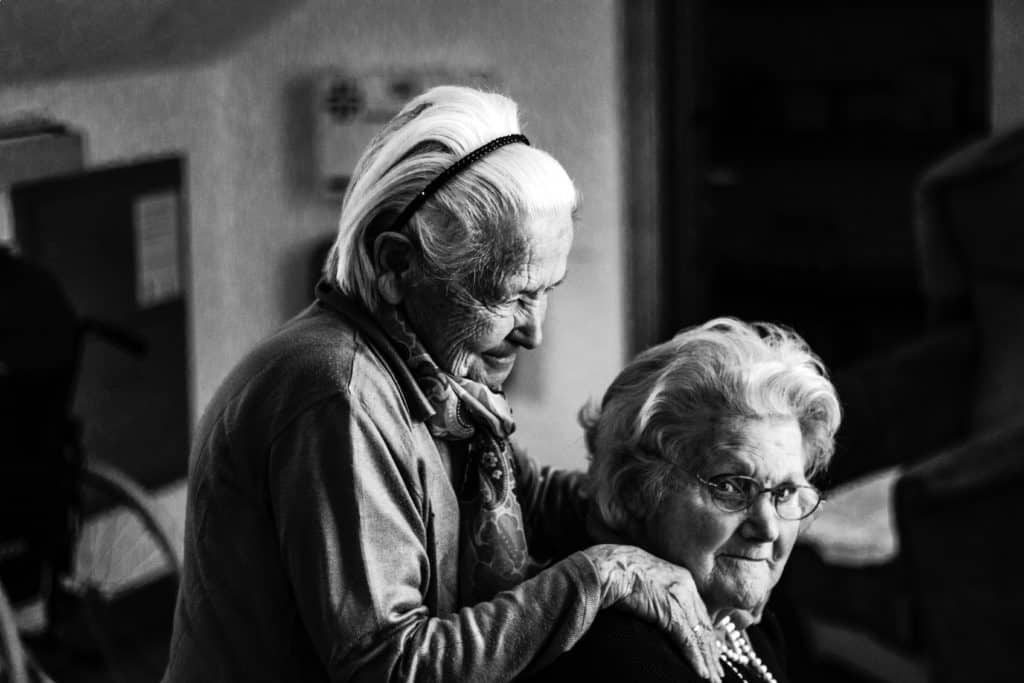Caregiving can have serious financial consequences, with long-term repercussions. Caregivers are more likely to accommodate their family obligations by working part-time or spending less time in the paid workforce, and these factors contribute to lower income in retirement.
While more men are providing care, it’s still mostly women who take on the primary caregiver role. Becoming a caregiver can happen at any time, but often it happens as you are nearing retirement age. Even older adults who are financially prepared for their retirement may suddenly find themselves unprepared to manage the costs of caregiving. According to a study by AARP, the average out of pocket cost for caregiving is nearly $7,000 annually, but the cost moves up to $12,000 if the caregiver lives an hour or more away from the care recipient. On average, caregivers spend 24.4 hours a week providing care to their loved one, and 76% of caregivers report making adjustments to work schedules.
Caregiving provides another financial challenge for women’s retirement security, but it all boils down to a woman’s lifetime of work, with the major sources of retirement income coming from Social Security benefits, pensions or 401(k) plans, earnings and personal savings. One of the biggest mistakes caregivers make is simply not taking the time or waiting too long to understand how much money they will have in retirement, where it will come from, and how much they will need. Women need more retirement income to support a longer life on average and the increased likelihood of developing a chronic illness that will require long-term care services and supports.
A good first step for caregivers is to sign up for an online Social Security account and access your benefits statement at ssa.gov/myaccount. Social Security benefits are determined by the top 35 years of earnings and by marital status. If a woman has married, she may have a choice of whether to take a spousal benefit which provides half of her spouse’s Social Security benefit, or her own benefit, whichever is higher. You can also take an inventory of your sources of income by using WISER’s worksheet Get Your Ducks in a Row. Check out WISER’s other caregiving resources, including 4 Steps for Caregivers and Financial Steps for Caregivers: What You Need to Know About Protecting Your Money and Retirement. The booklet provides step-by-step financial guidance for caregivers and includes practical information on the full range of financial issues related to caregiving.
Caregiving can be a very rewarding experience, but it can also be a very costly one. If you are a caregiver, or expect you may be one someday, it is important to take the necessary steps to avoid compromising your own future financial security. Remember, it is just as important to take care of yourself while also caring for others.
Single or Married? Women are more likely to be single and are at a much greater risk of poverty when they retire than are men. At age 65, older women outnumber older men by nearly 6 million. At age 85, 83% of women are single (widowed, divorced or never married). The poverty rates also increase with age: while the poverty rate for all women age 65 and older is 11%, the poverty rate for women living alone is nearly 19% (compared to 15% for men). For women of color, the rate is even higher, with the highest poverty rates experienced among older Black women (31%) and older Hispanic women (43%) who lived alone. The average annual Social Security income for all minority women is $12,832; more specifically for African American women it’s $13,426 and for Hispanic women, it’s $12,260.
Cindy Hounsell is President of the Women’s Institute for a Secure Retirement.
Photo by eberhard grossgasteiger on Unsplash



